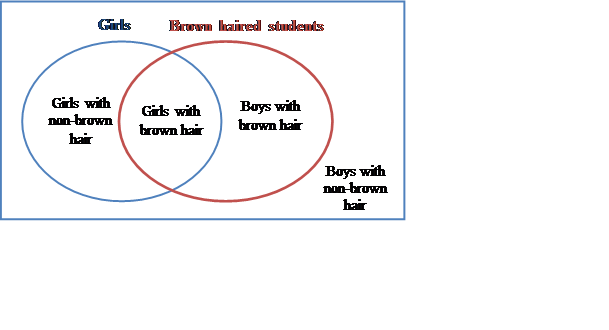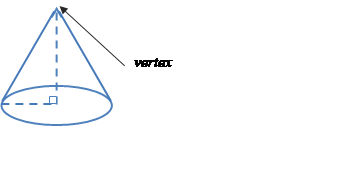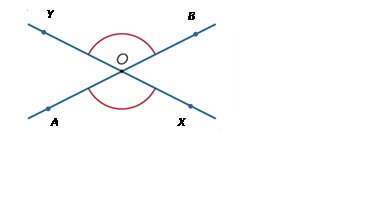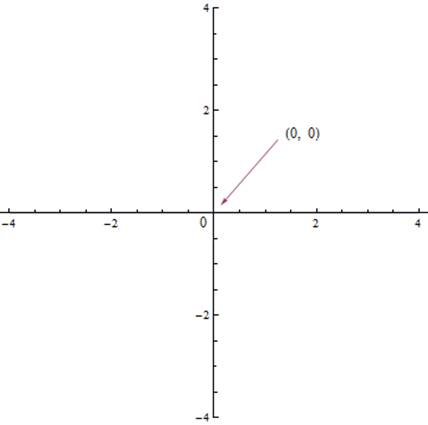Variable
A variable is a term used to designate an arbitrary element of a set. For example, if ![]() is any natural number, then
is any natural number, then ![]() is an odd natural number. The terms
is an odd natural number. The terms ![]() and
and ![]() are called variables. The rules of functions are often specified using variables for example, the function which takes a number, squares it then subtracts three, can be specified in terms of the variables
are called variables. The rules of functions are often specified using variables for example, the function which takes a number, squares it then subtracts three, can be specified in terms of the variables ![]() and
and ![]() as
as ![]() .
.
When investigating relationships in bivariate data, the explanatory variable is the variable that may explain or cause a difference in the response variable. For example, when investigating the relationship between the temperature of a loaf of bread and the time it has spent in a hot oven, temperature is the response variable and time is the explanatory variable.
With numerical bivariate data, it is common to attempt to model such relationships with a mathematic equation and to call the response variable the dependent variable and the explanatory variable the independent variable. When graphing numerical data, the convention is to display the response (dependent) variable on the vertical axis and the explanatory (independent) variable on the horizontal axis. When there is no clear causal link between the events, the classification of the variables as either the dependent or independent variable is quite arbitrary.
An arbitrary (free) variable is variable whose scope is not limited by a logical quantifier. Free variables frequently are used in proofs to represent an arbitrary element of a set.
See also: categorical variable, data, function, numerical data, numerical variable.
Variable (algebra)
A variable is typically designated by a symbol, such as ![]() or
or ![]() , to represent an unspecified member of some set. For example, the variable
, to represent an unspecified member of some set. For example, the variable ![]() could represent an unspecified real number. See also: variable.
could represent an unspecified real number. See also: variable.
Variable (statistics)
A variable is something measurable or observable that is expected to either change over time or between individual observations. Examples of variables in statistics include the age of students, hair colour or a playing field’s length or shape. See also: variable.
Venn diagram
A Venn diagram is a graphical representation, using several typically overlapping closed curves, such as circles, of the relationship between elements of sets in relation to properties or attributes. They are drawn with respect to some specified universal set.
For example, consider the universal set of all students at a school, the set of girl students, and the set of students with brown hair. All students can be represented on a Venn diagram as shown below:

Venn diagrams are normally used where two or three sets are involved. In probability problems, Venn diagrams are used to represents subsets of a sample space for events.
See also: probability.
Vertex (angle, graph, shape)
A vertex (plural: vertices) is a point in the plane or in space where several edges meet, but do not extend beyond. For example, the corners of a triangle or the point of a cone are the vertices, as shown below:


See also: line segment.
Vertically opposite angles
When two lines intersect, four angles are formed at the point of intersection. In the diagram, the angles marked ∠AOX and ∠BOY are called vertically opposite. Vertically opposite angles are equal.

See also: angle, vertex.
Volume
Informally, volume is a measure of the extent of an object in three-dimensions, or the amount of space it encloses. Volume is usually measured with respect to a specified cube unit. Finding the volume of a regular object is usually based on measure of linear dimensions and then calculated using a formula based on those dimensions.
Some useful formulae for volume may be found on the following page:
Shape |
Formula |
Linear Variables |
Cube |
|
|
Rectangular prism |
|
|
Prism |
|
|
Cone |
|
|
Cylinder |
|
|
Pyramid |
|
|
Sphere |
|
|
Ellipsoid |
|
|
W
Weight
Weight is the force experienced by an object and is found by multiplying the mass of an object![]() by the gravitational acceleration
by the gravitational acceleration ![]() . The SI unit for weight is newtons (N). On Earth,
. The SI unit for weight is newtons (N). On Earth, ![]() 9.8m/s2, while on the moon,
9.8m/s2, while on the moon, ![]()
![]() 1.62 m/s2. An object with a mass of 1 kg would weigh 9.8 N on Earth, and 1.62 N on the moon (around one-sixth as much). See also: mass.
1.62 m/s2. An object with a mass of 1 kg would weigh 9.8 N on Earth, and 1.62 N on the moon (around one-sixth as much). See also: mass.
X
x-axis
See: Cartesian coordinate system
x
The letter ![]() is commonly used to designate a variable, often the independent variable, in an algebraic expression or equation, such as the rule of a function. For example,
is commonly used to designate a variable, often the independent variable, in an algebraic expression or equation, such as the rule of a function. For example, ![]() is the variable in the function
is the variable in the function ![]() , or in the equation
, or in the equation ![]() . When
. When ![]() is the independent variable of a relation, the horizontal coordinate axis in the Cartesian plane for a graph of the relation is commonly labelled the
is the independent variable of a relation, the horizontal coordinate axis in the Cartesian plane for a graph of the relation is commonly labelled the ![]() -axis.
-axis.
Y
y-axis
See: Cartesian coordinate system
y
The letter ![]() is commonly used to designate a variable, often the dependent variable, in an algebraic expression or equation, such as the rule of a function. For example,
is commonly used to designate a variable, often the dependent variable, in an algebraic expression or equation, such as the rule of a function. For example, ![]() is a variable in the equations
is a variable in the equations ![]() , or
, or ![]() . Where
. Where ![]() is the dependent variable of a relation, then the vertical coordinate axis in the Cartesian plane for a graph of the relation is commonly labelled the
is the dependent variable of a relation, then the vertical coordinate axis in the Cartesian plane for a graph of the relation is commonly labelled the ![]() -axis.
-axis.
Z
z-axis
Commonly used as the third axis when considering the Cartesian plane in three dimensions, for example, in the study of curves in space.
z
Commonly used as the third variable (with ![]() and
and ![]() ) to locate points in three-dimensional space. For example, the point located at coordinates (1, 2, 1) would be found at
) to locate points in three-dimensional space. For example, the point located at coordinates (1, 2, 1) would be found at ![]() ,
,
![]() and
and ![]()
Zero
The word zero, comes from the Arabic word sifr, or cipher in English, which means a secret or disguised writing, or a symbol for a vacant place. The numeral 0 is used to denote the number zero.
As a result, zero plays two important roles in mathematics: as a number and as an empty place holder digit in the decimal expansion of numbers. For example, the digit 0 in the number 2057 indicates ‘no hundreds’ in the place value expansion of the number two thousand and fifty-sevenor equivalently 2 × 1000 + 0 × 100 + 5 × 10 + 7 × 1.
For sets, zero specifies the number of elements in an empty set (none). Although closely related, the number zero, 0, is not the same as the empty set, { }, which is sometimes represented by the special symbol, Ø to distinguish the set from the number. The empty set is a collection that has no elements. Zero indicates the number of elements in this set which is none.
Zero also corresponds to the origin on the real number line:

The point of intersection of the vertical and horizontal axes of the Cartesian coordinate system is also called the origin and designated by the letter O. This origin is specified by the coordinates (0, 0) and plays an important role in work on graphs of functions and other relations.

Zero has several important number properties.
See also: Cartesian coordinate system, fraction, real numbers, identity.
Zeroes of a function
The zero/es of a function ![]() sometimes referred to as the root/s, are the solution/s
sometimes referred to as the root/s, are the solution/s ![]() for that function such that
for that function such that ![]() . For a function in the Cartesian plane, these zeroes will correspond to the intercepts of the function with the
. For a function in the Cartesian plane, these zeroes will correspond to the intercepts of the function with the ![]() -axis (when
-axis (when ![]() ).
).
For example, the function![]() over
over ![]() will have three zeroes at
will have three zeroes at ![]() and
and ![]() , corresponding to the solutions for
, corresponding to the solutions for ![]() when
when ![]() . See also: function, intercept.
. See also: function, intercept.
Source: https://victoriancurriculum.vcaa.vic.edu.au/LearningArea/LoadFile?learningArea=mathematics&subject=mathematics&name=Mathematics%20Glossary.docx&storage=Glossary
Web site to visit:ttps://victoriancurriculum.vcaa.vic.edu.au
Author of the text: indicated on the source document of the above text
If you are the author of the text above and you not agree to share your knowledge for teaching, research, scholarship (for fair use as indicated in the United States copyrigh low) please send us an e-mail and we will remove your text quickly. Fair use is a limitation and exception to the exclusive right granted by copyright law to the author of a creative work. In United States copyright law, fair use is a doctrine that permits limited use of copyrighted material without acquiring permission from the rights holders. Examples of fair use include commentary, search engines, criticism, news reporting, research, teaching, library archiving and scholarship. It provides for the legal, unlicensed citation or incorporation of copyrighted material in another author's work under a four-factor balancing test. (source: http://en.wikipedia.org/wiki/Fair_use)
The information of medicine and health contained in the site are of a general nature and purpose which is purely informative and for this reason may not replace in any case, the council of a doctor or a qualified entity legally to the profession.
The texts are the property of their respective authors and we thank them for giving us the opportunity to share for free to students, teachers and users of the Web their texts will used only for illustrative educational and scientific purposes only.
All the information in our site are given for nonprofit educational purposes